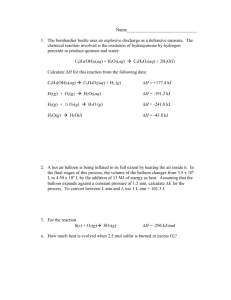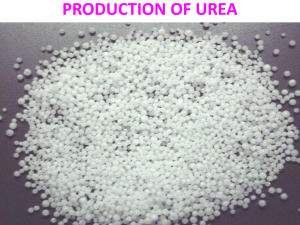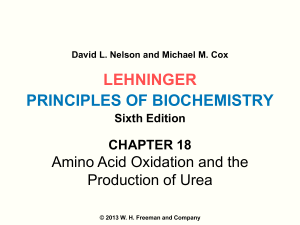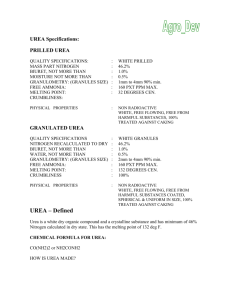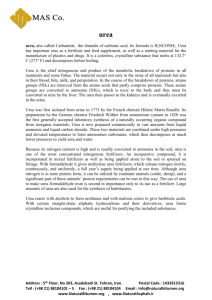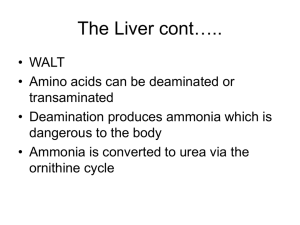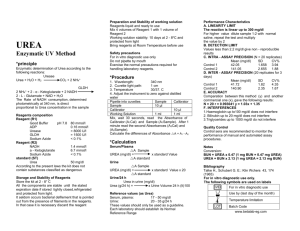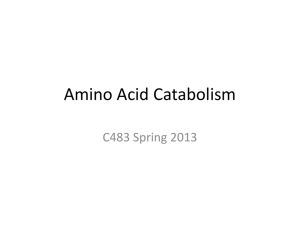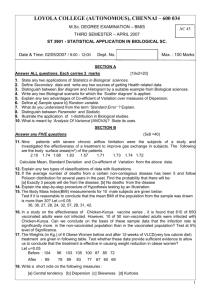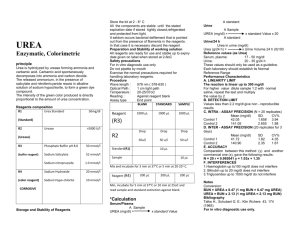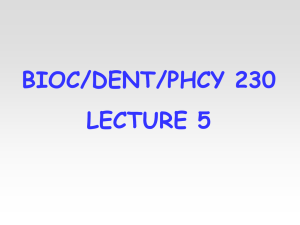Urea_cycle
advertisement
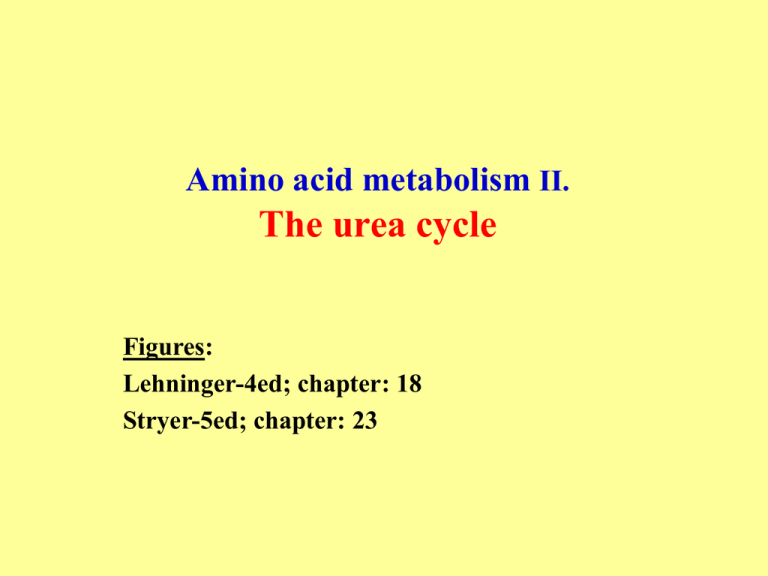
Amino acid metabolism II. The urea cycle Figures: Lehninger-4ed; chapter: 18 Stryer-5ed; chapter: 23 Overview of amino acid catabolism in mammals Excretory forms of nitrogen In ureotelic organisms, the NH3 deposited in the mitochondria of hepatocytes is converted to urea in the urea cycle. This pathway was discovered by Hans Krebs (citric acid cycle) and Kurt Henseleit. Urea production occurs almost exclusively in the liver and is the fate of most of NH3 channeled there. Urea → bloodstream → kidneys → urine Possible sources of ammonia ● Amino acid degradation in every organ, especially in the liver and muscles ● Ammonia secretion (5-10% of whole N turnover) in kidney tubules from glutamine (Chinese Restaurant) ● Nucleotide (pyrimidine) degradation ● Intestinal bacteria produce it from amino acids and urea Ammonia is very toxic → cerebral edema, increased cranial pressure (depletion of ATP in brain cells?) Links between the urea cycle and citric acid cycle The energetic cost of urea synthesis 2NH4+ + HCO3¯ + 3ATP + H2O → urea + 2ADP + 4Pi + AMP + 2H+ ● requires 4 high-energy phosphate groups ● NADH is produced in the malate dehydrogenase reaction (urea cycle ↔ citric acid cycle) ● NADH = 2.5 ATP (mitochondrial respiration) The overall energetic cost of urea synthesis is reduced! Regulation of the urea cycle

